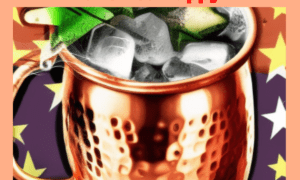
Old New Year’s Day has a riveting history that dates back to many centuries ago.
This enigmatic celebration marks the beginning of the new year, according to the Julian calendar, which was widely used across the world before the introduction of the Gregorian calendar. This intriguing fusion of past and present, the Old and New Year’s Day festivities, resonate a charm that has captivated generations over time.
Remarkably, some cultures still cherish this ancient tradition, reveling in the allure of the old world, honoring it with jubilant feasts, and reminiscing the rich legacy of our ancestors. The pomp and grandeur of these celebrations serve as a timeless reminder of the persistence of heritage and the indomitable spirit of human civilization in the constant flow of time.
HISTORY OF OLD NEW YEAR’S DAY
The history of the old New Year’s Day on March 25th, also known as Lady Day or the Feast of the Annunciation, is a fascinating tale that transports us back in time to a world of different calendars and cultural traditions. In many ancient societies across Europe, this date marked not only the beginning of a new cycle of agricultural activities, but also a pivotal point in the liturgical calendar with the celebration of the announcement to Mary that she would give birth to Jesus Christ.
Rooted in both pagan and Christian traditions, this day was once widely observed as a time of renewal, reflection, and new beginnings. It wasn’t until the adoption of the Gregorian calendar in 1582 that the date for New Year’s Day was moved to January 1st, yet remnants of the old celebration can still be found in various cultural customs that remain popular to this day. Delving deeper into the history of the old New Year’s Day offers us an opportunity to appreciate the rich tapestry of human experiences throughout the ages, and invites us to ponder the ever-shifting sands of time and the way we mark its passage.
TEN THINGS ABOUT OLD NEW YEAR’S DAY
- Historical Significance: Old New Year’s Day, observed on January 14th, holds historical significance in various cultures and calendars, marking an alternative celebration to the widely recognized New Year’s Day on January 1st.
- Julian Calendar Influence: Old New Year’s Day is associated with the Julian calendar, which was in use before the adoption of the Gregorian calendar. Some Orthodox Christian churches still follow the Julian calendar for their religious celebrations.
- Continuation of Festivities: For many cultures, Old New Year’s Day is seen as an extension of the festive season, providing an opportunity to continue the merriment and celebrations beyond the widely observed New Year’s Day.
- Cultural Traditions: Different regions have unique customs and traditions associated with Old New Year’s Day. These may include special meals, religious observances, and cultural rituals.
- Double Celebrations: Individuals and communities that observe both Old and New New Year’s Days enjoy the privilege of double celebrations, allowing for an extended period of joy and festivity.
- Nostalgic Reflections: Old New Year’s Day often prompts reflections on the past year and the opportunity to set intentions and resolutions for the year ahead, offering a nostalgic perspective on the passage of time.
- Harvest Celebrations: In some agricultural communities, Old New Year’s Day aligns with the end of harvest seasons, making it a time to celebrate the abundance of the land and express gratitude for a successful harvest.
- Religious Observances: For certain religious communities, Old New Year’s Day holds religious significance and may involve special prayers, church services, and spiritual reflections.
- Global Diversity: The observance of Old New Year’s Day is diverse, with various countries and cultures embracing their unique ways of celebrating this alternative date, adding to the richness of global traditions.
- Culinary Delights: Special foods and dishes are often prepared for Old New Year’s Day celebrations, adding a culinary dimension to the festivities. These may include traditional recipes passed down through generations.
HOW TO CELEBRATE OLD NEW YEAR’S DAY
- Celebrate the spring New Year by planting seeds.
- Get out the champagne and host another New Year’s Party.
- Meditation: Spring Cleaning of the Mind.
- Vintage Recipes for the Old New Year.
- If you love the article image, purchase it on these fun products on Zazzle!
- Download the 38 Hertz Celebration Book for 365 days of celebrations!
Note: If the above links do not direct you to the appropriate referral on the first try, return to the article and try again.
Do you have any ideas about how to celebrate Old New Year’s Day? Please share them!












